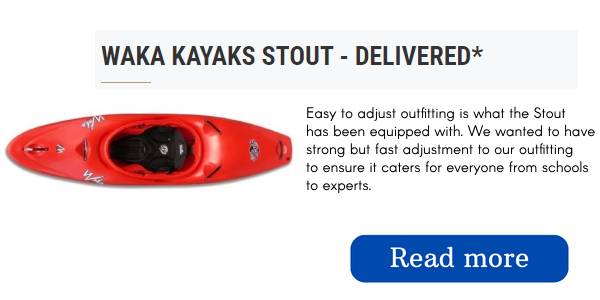Western explorers in the early days used canoes a lot to carry themselves and their belongings.
Nowadays, the biggest challenge to owning a canoe is how to transport it to and from where you’ll use it. Many modern canoes are big, bulky, and heavy.
How to transport a canoe?
A canoe can be transported in various ways, from carrying it over your head to using specialized equipment like canoe trailers, canoe carts, and vehicle roof racks. The easiest way to transport a canoe is to simply put it in the bed of a pickup truck.
There are many ways to transport your canoe to and from the water. Read on and we’ll go through them.
Canoe Transportation
The first step to taking a peaceful canoe trip is transporting the canoe to the lake or river you’re planning on paddling.
One of the most important things to consider when transporting a canoe is how to do it safely and securely.
You need ropes or straps to carry your canoe to the water, and a tarp to cover it at night. The purpose of the ropes is to secure the canoe to the vehicle so it doesn’t move during transport.
After the canoe is paddled to the desired location, the paddles can be used to tie the canoe to a dock or secure it to the shore.
Waterproof tarps are helpful for keeping the canoe dry while you’re not using it overnight. A canoe cover can protect your canoe from sun damage, scratches, and condensation while it is not in use.
Canoeing is frustrating when you have to clean the dew off your seat before you start paddling for the day.
Transporting a Canoe With a Vehicle
There are different ways of transporting a canoe using a vehicle. It just depends on what type of vehicle you have and what modifications or accessories you might need to get you and your canoe to your destination safely.
If you own a pickup truck with a lumber rack, you can easily transport long and heavy canoes. If you only have a car, you can tie your canoe to the roof or the roof rack.
Roof racks are a great option to transport a canoe because you can easily strap it down and don’t need a canoe trailer or car hitch to pull it. There is less chance of the canoe moving around on a roof rack if it has been properly tied down and secured.
Attaching the Canoe to a Roof Rack
If you have an SUV, a van, or even a lot of crossovers or passenger cars, chances are your vehicle came with a roof rack built into it. If you don’t have a bike rack, it’s not hard to put one on most vehicles.
Roof racks are two bars that run along the sides of your car’s roof. There are at least two cross supports between the bars. Roof racks are great for attaching various items to your car when you are transporting them to your destination.
When attaching a canoe to a roof rack, be sure to use cam straps or another method to secure it tightly to the rack. Using cam straps to secure a canoe while transporting it is a good idea because their design makes it possible to tighten the belts manually, making sure the canoe doesn’t move.
Steps for attaching a canoe to a roof rack:
- Remove everything from the canoe
Make sure the canoe itself is entirely free of anything inside it—paddles, life vests, etc. You don’t want anything falling out of the canoe while you’re traveling down the road. It’s dangerous. - Check your roof rack’s weight rating
Make sure your vehicle’s roof or roof rack can take on the canoe’s additional weight. You can do this by checking your vehicle’s user manual to see the maximum extra weight your vehicle’s roof rack supports. Once you’ve determined that the canoe is light enough, you can begin to attach it to your roof rack. - Get help lifting the canoe onto the roof rack
Attaching the canoe to your roof rack is easier if you have help lifting the canoe onto the car. If you want to protect your canoe and your vehicle, you can place cloth or foam bricks in between the canoe and the car’s roof to prevent any damage to the car or the canoe. - Center the canoe side to side and front to back
You’ll want to center the canoe and balance it front to back on the crossbars so that it doesn’t tip forward or backward. Also, keep the canoe centered parallel and in line with the center of the car as evenly as possible. Because if the canoe is tilted even a little off-center, the wind from the drive can cause the canoe to pull to one side or the other while you’re driving. - Get the straps over the canoe
After you have the canoe balanced, take the cam strap’s non-buckle end, and toss it up and over the canoe to the driver’s side of the vehicle. - Wrap the strap around the canoe and the roof rack
Once you have the non-buckle side on the vehicle’s driver side, wrap the strap around the roof rack’s long sidebar and then thread it back to the passenger side of the car. - Tighten the straps
Slide the strap underneath the canoe and then through the buckle and begin to tighten it. You want to make sure both straps are evenly tightened. - Tie off the loose strap ends
The last and final step is to ensure the loose ends of the straps don’t flap around in the wind. You should tie them off as well as you can and/or find a place to tuck them in to ensure they don’t fly out during transportation.
How To Choose The Best Kayak Trailer – Buying Guide
This article provides an overview of kayak trailers, including information on different materials, volume, and capacity.
The different trailers
As kayaking becomes more popular, the associated gear expands as well. There are an increasing number of tools and trailers available, each offering something slightly different.
You cannot just buy one and be done with it. Be sure to check the specifications of the trailer you are considering to make sure it is up to the task.
The Trailer’s Capacity
The capacity of kayak trailers can vary depending on the manufacturer and the design.
More kayaks can be carried on a trailer if it is larger, but most trailers can carry between two and four kayaks. This is the perfect place for all kayakers, and they won’t need anything more.
You don’t need a specialty trailer that can hold 16 kayaks unless you’re transporting them for your whole neighborhood. With a kayak roof rack, you can transport two additional kayaks on your car.
Kayak Trailer for Tandem Kayaks
Two person kayaks generally don’t need a two kayak trailer. They are, however, significantly longer than standard solo kayaks, which could present some problems.
The length of the kayak should be considered when using a tandem kayak on a trailer. In general, a kayak trailer with a capacity of 19-foot kayak length is a good choice.
You can carry a tandem kayak on a regular kayak trailer. The kayak will still stick out and this could be dangerous for other drivers and yourself. If your kayak hangs over the edge of the trailer, it will not be as secure and you could have an accident.
If you have a solo kayak but an ocean-type of kayak, you will also need a trailer that is longer than usual because these types of boats tend to be longer.
Multi Kayak Trailers
Most kayak trailers are created to accommodate multiple kayaks. This is incredibly convenient because you can take your friend’s or family’s kayak or load more gear onto it.
When you are loading more than one kayak on the trailer, make sure you pay attention to the weight capacity of the trailer and your vehicle.
You need to take into account the weight of the kayaks, the trailer, and any other gear when deciding how much your vehicle can pull.
trailers that can haul other gear are great, but you will need to double check the details to be sure it will work for you. Some trailers are designed with adapters that allow you to carry additional gear.
Others don’t come with adapters and you have to get them separately.
The Weight
As I mentioned before, the weight capacity is an important consideration. I’ll continue discussing it here.
This means that you need to be aware of the weight of your kayak, canoe, and all of your gear so that you do not exceed the maximum weight rating for your trailer.
Be sure to check out these Paddle Board Kayak Seats! They’re great for gear.
An average kayak weighs around 20 kilos while an average kayak trailer can be approximately 80 to 90 kilos. You should not exceed the limit of 2 to 4 kayaks when using this system, or it will break.
The Storage
Will you have a place to keep it when it’s not in use? Think about where you will store the trailer when it’s not in use.
When not in use, you will need to have a place to store your kayak trailer.
People have come up with a solution for this as well! A foldable trailer!
Foldable kayak trailers offer the same portability as rigid ones, but provide more storage space. Keep in mind that these trailers will be hefty, so you will need a designated area for storing them.
You won’t be able to move them whenever you need space.
This means that you won’t have to find space for both the trailer and your kayak, and can have just one designated spot. Remember to keep them out of the sun and in a cool place!
It is easier to go kayaking when the kayak is already loaded on the trailer.
The Price
If you are thinking about transporting your kayak in your car, a roof rack will be cheaper than a trailer, but it may not be more helpful or secure.
A kayak trailer would provide you with more storage room for your belongings, as opposed to having to drill holes into the roof of your car. If you are looking to transport more kayaks, then a kayak trailer would be a better option.
However, good news for those on a tighter budget. A kayak trailer that you put together yourself will cost less than one that is already built.
Just like the foldable trailers, these will be rigid so you don’t have to worry about quality.
You may be able to find a good used trailer if you cannot afford a new one. The designs are simple and there is not much that can go wrong.




